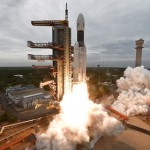Much like biological ecosystems hibernate during long cold winters, the COVID-19 global pandemic has put India’s space activities into suspension. Prime Narendra Modi’s administration wisely carried out much-needed space reforms in May 2020. A year later, the future of India’s private space industry looks bright, with space startups raising nearly US$ 30 million. But ISRO’s space launch activities have come to a halt. To maximise the impact of reforms, the government must end the hibernation and quickly debug the space launch sector.
The competition is stiff, for during the pandemic, the rest of the world has been in space overdrive. Countries like Iran carried out their first-ever space launches on indigenous launch vehicles. Monaco, Slovenia, Guatemala, Myanmar, Tunisia, Moldova, and Paraguay had their first satellite launches via commercial launch contracts. The major space powers, U.S. and China, went to Mars. China launched the first module of its space station in the low-Earth orbit, and also launched its first 6G satellite. The UAE also went to Mars on a Japanese launch vehicle. Japan received its Hayabusa-2 space capsule that was returned from the asteroid Ryugu.
Superficially these developments may appear as democratization of outer space. But many of these activities are coalescing under astropolitical blocs led by superpower space-faring nations, particularly U.S. and China.
In comparison, India’s space activities slowed. India’s global share in the total space launches continues to be low at 1.8%. The three launches from the Sriharikota Range took place between November 2020 and February 2021, between the first and second waves of COVID-19 in India. With the new competition, the satellite customer base that India’s commercially successful Polar Synchronous Launch Vehicle (PSLV) enjoyed for 20 years, is shrinking considerably.
This is not desirable. It will take some time for the new start-ups to make an impact. The first demonstrations from India’s space launch startups, Agnikul Cosmos and Skyroot Aerospace, which recently raised $11 million each in Series A investments, are a few quarters away. Likewise, the first space launch from Small Satellite Launch Vehicle (SSLV), built by ISRO and marketed by the state-owned New Space India Limited (NSIL), is yet to happen. Even if the first launch comes later this year, it will get the tag of a ‘space-proven’ launch vehicle only after it’s three to four successful launches.
A case in point is the 2014 NASA-ISRO joint project – the NASA-ISRO Synthetic Aperture Radar (NI-SAR) satellite – which has been delayed by a year due to the slow development of ISRO’s second-largest launch vehicle, the GSLV-Mk-II. An April 2020 NASA Assessment of Report of the United States Government Accountability Office (GAO) noted that, before launching NI-SAR (originally scheduled to launch in late-2021), the GSLV-MK-II must fulfill specific criteria identified by ISRO and NASA. So far, this is incomplete, presumably because of the pandemic.
However, the pandemic has not stopped other launch vehicle developers like the U.S.’ SpaceX, or United Launch Alliance, China’s Long March, ExPace and OneSpace, or New Zealand’s Rocket Lab from testing their rockets and providing launch services to their customers.
Today’s space launch customers – typically governments or industries from telecom to agriculture – are now spoilt for choice. They can carefully evaluate launch vehicles and launch service providers on crucial parameters – reliability and success rate of the launcher, launcher performance, suitability for launching a specific satellite or spacecraft, launch cost, on-demand availability and scheduling, confidentiality, and attractive customer relations.
India must step smart. The next five years are crucial to stay competitive, and a series of micro-reforms must be made and tasks completed. First, private companies born during the pandemic must have uninhibited access to space testing infrastructure for quick vehicle development. Second, ISRO must urgently acquire the SSLV space-proven credentials and make the mighty GSLV MK-III fit for human spaceflight mission Gaganyaan. Finally, testing and on-field evaluation of reusable space planes for orbital and sub-orbital flights needs to be accelerated. The reusable launch vehicle (RLV-TD), ISRO’s hypersonic space plane, has been awaiting tests since 2016.
India now has more launch vehicles in testing and operational phases than ever before. It demands a micro-reform in the form of a national policy for commercial sub-orbital, orbital and inter-planetary space transportation. This requires the Director General of Civil Aviation (DGCA) to expand its ambit into commercial space transportation – as has the U.S.’s Federal Aviation Administration. Similar to NASA-FAA synergies, a joint DoS-DGCA national strategy can help make India’s space launch centers and spaceports market-oriented and ready for commercial, military, civilian, and experimental space launches. The space launch service providers and space launch technology companies can become partners in this strategy. DoS, riding on the success of the space reforms, must now remove the excruciating redundancies in India’s space launch sector. Enough of the pandemic excused hibernation.
Chaitanya Giri is Fellow, Space and Ocean Studies Programme, Gateway House.
This article was written exclusively for Gateway House: Indian Council on Global Relations. You can read more exclusive content here.
For interview requests with the author, or for permission to republish, please contact outreach@gatewayhouse.in.
© Copyright 2021 Gateway House: Indian Council on Global Relations. All rights reserved. Any unauthorized copying or reproduction is strictly prohibited.


